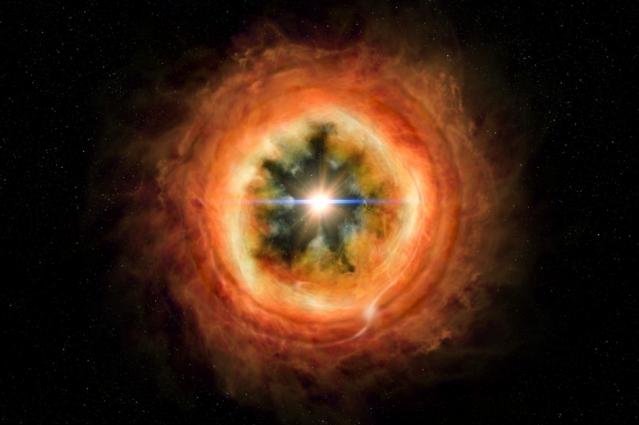Ancient asteroid fragments suggest the solar nebula lasted between 3 and 4 million years. Photo by NASA/JHUAPL
Feb. 9 (UPI) -- New research suggests the solar nebula lasted between 3 and 4 million years. The solar nebula was the collapsed clump of swirling molecular gas clouds that formed the sun and solar system.
Scientists say the improved nebula timeline will allow them to paint a more accurate picture of the early solar system, the birth of the sun and the evolution of the first planets.
Previous estimates could only place the lifetime of the solar nebula between 1 and 10 million years. The new, more accurate estimate was made possible by angrites, ancient rocks forged on the surface of the solar system's earliest asteroids.
"Angrites are really spectacular," Benjamin Weiss, professor of Earth, atmospheric, and planetary sciences at the Massachusetts Institute of Technology, told MIT News. "Many of them look like what might be erupting on Hawaii, but they cooled on a very early planetesimal."
Weiss and his colleagues measured magnetization patterns and uranium-lead ratios in the four angrite samples, collected from Brazil, Argentina, Antarctica and the Sahara Desert.
"Electrons are little compass needles, and if you align a bunch of them in a rock, the rock becomes magnetized," Weiss explained. "Once they're aligned, which can happen when a rock cools in the presence of a magnetic field, then they stay that way. That's what we use as records of ancient magnetic fields."
The ancient angrite samples revealed very little remnant magnetization, suggesting the presence of a very weak magnetic field at the time of their formation.
Models of early solar system evolution show a diminished magnetic field leads to the disappearance of the solar nebula.
"It's predicted that once the magnetic field drops by a factor of 10 to 100 in the inner solar system, which we've now shown, the solar nebula goes away really quickly, within 100,000 years," Weiss said. "So even if the solar nebula hadn't disappeared by 4 million years, it was basically on its way out."
With a more accurate solar nebula timeline, astronomers can make more precise predictions about the formation of the first planets.
"The gas giants must have formed by 4 million years after the formation of the solar system," Weiss concluded. "Planets were moving all over the place, in and out over large distances, and all this motion is thought to have been driven by gravitational forces from the gas. We're saying all this happened in the first 4 million years."
Researchers published their findings in the journal Science.















